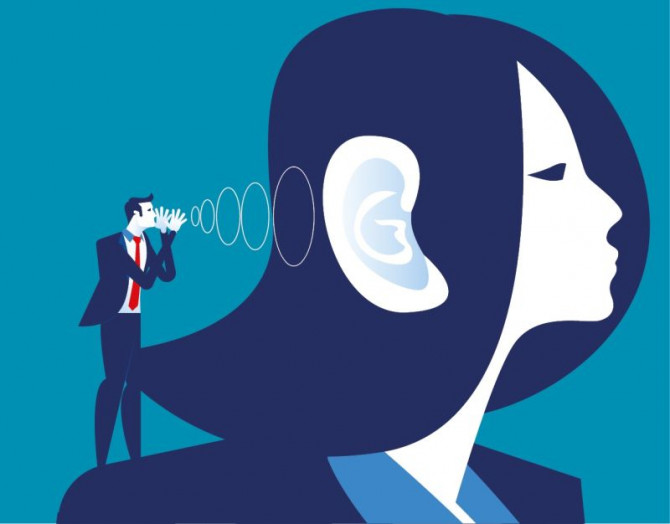The follow up, or how to increase the chance of a sale
When I was asked to write this article, I thought the topic was so obvious that it wouldn’t be interesting. However, after a moment of reflection I came to the conclusion, however, that there’s something there that the salespeople who call me rarely follow up... I realized that this is indeed a problem and that what for me is a normal part of relationship building, for many is a meaningless activity. In the article I will answer the question of why and how to do effective follow up.
Dostępny jest przetłumaczony materiał kliknij tutaj, aby przejść do materiału.

To follow up is to maintain contact after sending an offer or sale in order to strengthen the message, in the context of additional sales, and to build relationships with the client. The article focuses only on the aspect of client acquisition, because it is in this area that the salespeople - even those with a lot of experience - have the most problems. Sending an offer and not following up is like asking someone a question and not wanting to hear the answer.
Fictitious research on the amount of communication necessary to make a sale
Recently, there’s been some information on social media about an institute which conducted research on the amount of communication necessary to close a sale. They said that an average of eight meetings, calls, and emails were necessary to make a B2B sale, with the average salesperson making contact two to three times. It turned out that the institute didn’t exist at all. Perhaps this research was never carried out; nevertheless, the information was readily accepted and passed on by many people
Don’t sell at first contact
In B2B sales, we’re very rarely able to sell something after the first call or meeting. The first encounter is about getting to know each other and addressing the client’s fears before starting cooperation. Attempting to close sales at this stage may fail, and your behaviour may be perceived as intrusive. That’s why it’s usually necessary to follow up several times, on the one hand to build a relationship, and on the other hand to give the client time to get acquainted and, of course, to compare our offer with the competition. The practice of comparing three offers before making a decision is becoming standard practice.
Pay attention to timing
When someone sends me an offer and doesn’t follow up, I feel like I’m just not an important client. The salesperson, in turn, probably thinks that someone else gave me a better price and I’m not interested. Meanwhile, my practical experience shows that the client needs to be contacted several times before establishing business relationships. Timing counts here, i.e. feeling when’s the best time to make purchase decisions and staying in contact with the client so that when they’re ready to make a decision, you’re the first person that comes to mind.
Building client awareness
As a salesperson, you conduct marketing activities aimed at consolidating the client's awareness that you exist, that your product exists, and that your company is trustworthy. The more sensible your communication is, the more likely you’ll be remembered. However, you shouldn’t be too intrusive. How often you should contact the client depends on the purchase rhythm, client's priorities, and the amount of time needed to make a decision. It’s good to prepare the client for follow up and establish his time and form.
Do not lose sales opportunities
If someone is in your market segment and is your ideal client, it would be a sin to give up on communication with them, even if you’ve already tried and failed to close a sale. You shouldn’t break contact even when your offer wasn’t selected. Clients have a very varied decision-making rhythm, and you have to be in tune with it. In addition, they might want to change their service provider, you might offer something the other providers don’t. This is a normal phenomenon in B2B sales.
An example from the automotive industry
When I worked in the automotive industry and did a ‘secret client’ survey, most salespeople never called me back to see how I felt about their offer. They didn’t even give themselves the chance to match a competitive offer, even from the same brand. When following up, you can answer all doubts, reservations and, above all, explain the misunderstandings that arise during the offer process.
Example 1: HoReCa
As the owner of a training company, I’m contacted by a lot of hotel salespeople. The contact usually includes the question: Can we send an offer? The salesperson sends an offer, and then our relationship ends. I always ask myself, why does that happen? Does that person no longer work for the company, or are they already booked up and don’t need new clients?
Example 2: SEO
As befits the IT industry, SEO companies use e-mail more often than telephone conversations or direct meetings. However, even if they are well-structured, the emails I receive rarely contain follow-up elements. Sometimes I receive the same email again, and then I know it’s just a machine writing to me. I understand that statistics count here, but I just don’t like to be treated in this way, so I mark the message as spam.
Wykorzystałeś swój limit bezpłatnych treści
Pozostałe 52% artykułu dostępne jest dla zalogowanych użytkowników portalu. Zaloguj się, wybierz plan abonamentowy albo kup dostęp do artykułu/dokumentu.






 Zaloguj się
Zaloguj się








